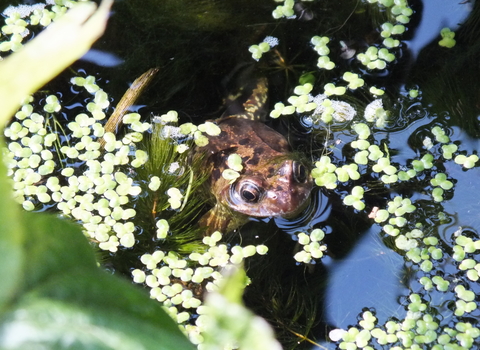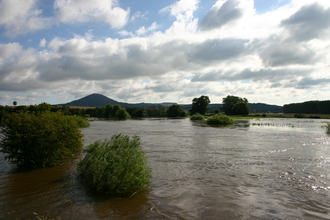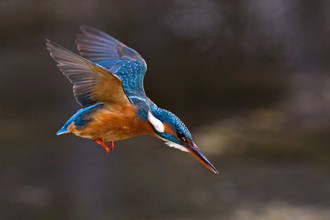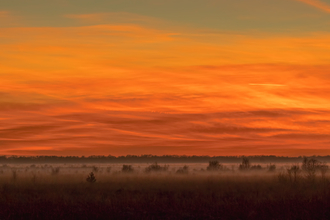A wildlife pond is one of the single best features for attracting new wildlife to the garden. We are delighted to be working on the great-crested newt project with Natural England to recreate ponds across the county.
We receive many enquiries about this subject, so we have tried to answer a few of the most commonly asked questions on this page.
Whether found in a garden or part of an agricultural landscape, ponds are oases of wildlife worth investigating. Even small ponds can support a wealth of species and collectively, ponds play a key role in supporting freshwater wildlife.
Since 1900 there has been an estimated total loss of over 50% of the UK’s ponds. 80% of those that remain are in a poor state and given that 2/3 of all freshwater species are supported by pond habitats this is a significant loss.
Where to start when creating a new pond
You can build a pond at any time during the year, but if you start in autumn or late winter, it will get established much quicker.
The best ponds for wildlife have shallow margins with a fringe of vegetation and nearby plant cover for amphibians and insects with terrestrial life stages.
We have several guides to creating a new pond on our website, but you can also find some recommendations for books in our FAQ's below.
For a step by step guide and information about choosing the right plants for a large pond: click here.
For a guide about creating a small container pond: click here.
You can also download a free Wild About Gardens booklet here.
Creating a bog garden
If you already have a soggy, permanently damp patch in your garden, or would like to create one at the edge of a pond these can also be a valuable habitat. They may be more preferable for families with young children too. Like a pond, it should attract frogs, toads and with taller grasses included, bees, butterflies and dragonflies. To find out how to create a bog garden: click here.
FAQ's
We receive many enquiries about pond creation, maintenance and ensuring the wildlife associated with them can thrive.
Should I introduce wildlife (including frogs or spawn) to my pond?
You will be amazed how quickly freshwater species find your pond, so there is no need for you to introduce any from other ponds. With the correct marginal planting, you will soon hear the drumming sound of dragonfly wings hovering over the surface. Creating hiding places with rocks and plants at the edge of the pond will provide habitat for frogs and newts.
It is not recommended to transfer amphibians or their spawn/tadpoles to other ponds for a number of reasons, probably most notable is the potential to transfer disease, but also that any frogs/toads you move may try to get back to their original pond instinctively, and may not survive. See this article from the Amphibian & Reptile Trust.
Natural succession in a new garden pond blog
If you do find that you have spawn which isn't developing, there's info on the Froglife pages here with a suggestion that when there isn’t enough light on the pond, this may have an impact. It also suggests getting the spawn out into a bucket to check if it's the pond:
There is also information on ARC's page under "Why are my spawn / tadpoles disappearing from my pond or failing to develop?"
How can I attract amphibians to my pond?
Britain has two native frogs and two toads, and three species of newts. Of these, the common frog and common toad are likely to be found in gardens throughout Britain. The common or smooth newt and the palmate newt are also widely distributed, while some ponds may even contain the scarce great crested newt.
A series of ponds in a neighbourhood creates a vital link for amphibians to move through our fragmented landscape. Make sure your pond has at least one side of the pool that gradually slopes up to dry land. This enables the young amphibians to leave the water in mid-summer once the tadpole stage is over. When in the pond, frogs and toads need a point above the water on which to rest and breathe. In the summer a water lily pad may suffice but a more permanent solution is to position a few rocks or logs half in and half out of the water if there are no suitable areas of shallow water.
Newts are probably the most aquatic of British amphibians. Attract them by allowing grass to grow over the pond edge into the water and introducing non-invasive submerged aquatic plants. Newts use narrow-leaved water plants on which to lay their eggs, placing each egg between a folded leaf.
The introduction of fish into wildlife ponds is generally not advised, as they can eat smaller animals, including spawn and mayfly larvae.
In the autumn, amphibians will look for suitable sheltered places where they can hibernate until the spring. Log piles provide good shelters but frogs, toads and newts will also find suitable places in hedge bottoms, compost heaps and under stones. Allowing fallen leaves to remain on lawns can provide a place for frogs to hibernate, while also providing homes for invertebrates. Amphibians will also hibernate in the silt at the bottom of ponds, so make sure you only de-silt once every five years and before the hibernating process has begun.
What should I do if I find a Great-crested newt?
Great-crested newts are designated and protected as European protected species, so it’s an offence to deliberately capture, injure or kill or deliberately disturb them.
Natural England advise that undertaking pond management should normally be carried out in late autumn through winter, typically 1st November to 31st January, when Great-crested newts are unlikely to be present in ponds. But even then it should be done with care, otherwise you may need to look into obtaining a licence, or getting someone with a licence to undertake the works; click here for more info.
With GCN present, it is advised to go through the vegetation you remove by hand and return any newts and other wildlife you find to the pond. There are some good handbooks available online regarding ponds with GCN, if you'd like to know more:
To record your Great-crested newt sighting, visit the Record Pool website which the Shropshire & Staffordshire Amphibian Group can access.

Philip Precey
How can ponds help my garden?
Ponds can attract species into your garden that are a true gardeners friend!
Frogs and toads are known to consume a large number of slugs, snails and caterpillars every day (read more). Gardeners World, the RHS etc. all advocate having ponds and other wildlife habitats to help control pests in gardens.
The Freshwater Habitats Trust research also demonstrates how beneficial ponds are to biodiversity, including "the exceptional value and impact of ponds, despite their small size".
Managing Invasive Non-Native Species
Charlie Dimmock - Invasive plants (https://www.youtube.com/watch?v=lBEfF8B7p7Q)
Charlie Dimmock explains how to spot and manage invasive non-native pond plants
I already have a pond, but it needs restoration. How do I do this without disturbing any wildlife?
Ponds naturally change over time, often becoming overgrown and can eventually end up as dry hollows with little evidence of their former existence.
If you have any dead leaf matter or areas overgrown with pond plants it is good to remove some of this. The former can release too much nutrient into your pond, causing algal blooms and a lack of oxygen, while the latter can end up choking a pond and leaving no open water space for other wildlife to, for example, perform courtship displays (such as newts require).
The general rule of thumb is to restore just a small section of a pond per year, so that the majority of creatures have somewhere to thrive while you work on another area. Leave plants etc. that you are removing at the edge of the pond for a week or so, so that any other wildlife can easily crawl back into the safety of the water. After that, you can remove the algae, vegetation etc and add it to your compost heap, it is full of nutrients and great for gardens (providing there are no invasive non-native plant species present).
Where can I find out more about pond creation and wildlife?
What lies beneath (https://www.youtube.com/watch?v=kLLGIO8BqXs)
A talk by Pete Lambert, Shropshire Wildlife Trust's Rivers Manager about what to think about when creating a new pond. Pete also covers some of the species that benefit from ponds.
This talk is approx. 1hr 50 minutes.
As well as searching through our species explorer pages online here, we also recommend the following:
Online
- The Freshwater Habitats Trust have a selection of useful guides to creating/restoring ponds.
Books and leaflets
- The Field Studies Council produce fold out waterproof guides to pond wildlife.
- Collins: Freshwater Life – Britain and Europe by Greenhalgh and Ovenden.
- Collins Gem: Pond Life by Manuel and Shields.
- Making Wildlife Ponds: How to Create a Pond to Attract Wildlife to Your Garden (Gardening with Nature) by Jenny Steel. Jenny is a Shropshire resident and has turned her garden into a wildlife haven. She has some advice on pond creation online here.
Camera Traps
Once your pond has established or if you have one already in your garden, a great way to see what is using it (especially mammals such as hedgehogs or foxes) is to set up a camera trap. Our mammal expert Stuart, shares his top tips for buying and installing these traps to record a variety of wildlife here.
Recording species
If you are happy to share information on any of the wildlife you find in your garden, the Shropshire Ecological Data Network would be delighted to receive your records - click here.
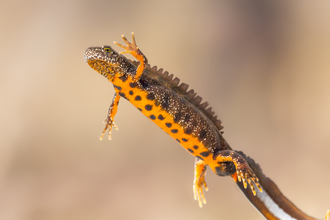
Dr Cath's Nature Notes - Great Crested Newts
I must have been about five years old. My brother and I were given shrimping nets and set free to ‘guddle’ in a pond while we were…
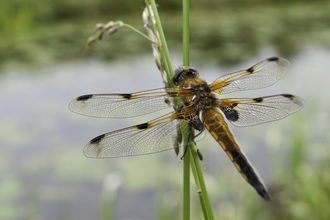
Garden ponds for insects
Making a pond in your garden is a marvellous way to attract wildlife, but have you ever thought how vital it might be for insects? Dr…
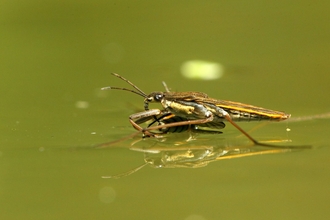
Natural succession in a new garden pond
When creating a new pond, you may be tempted to introduce species, but ponds will develop naturally and watching the process of…
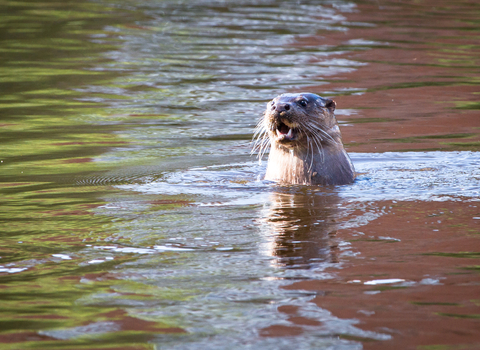
More ways to help
In a world of nature and climate crisis it can be difficult to work out how to help our blue network thrive. No matter what size your local watercourse is, it needs your protection!
For more ideas about how to monitor and help improve the health of watercourses in Shropshire:

